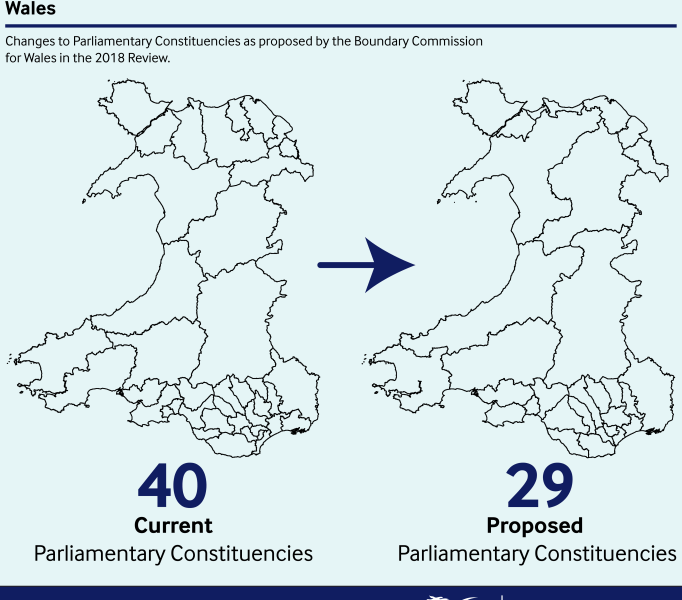THE ELECTORAL Reform Society have condemned a ‘dangerous U-turn’ from the Prime Minister, with news emerging that the PM is set to cut the number of MPs.
Reports had initially suggested that the PM had dropped plans to force through the cut in MPs linked with the boundary review.
However Theresa May now appears to be rejecting calls to keep the number of MPs at 650 – despite the Public Administration and Constitutional Affairs Committee warning today that moves to cut numbers to 600 are unlikely to secure the backing of MPs.
The ERS are warning that the cut in MPs actually represents a cut in backbenchers if there are no plans to cap/cut the size of the executive or ‘payroll vote’ correspondingly.
At the same time, voters will lose European representation while Parliament gains more powers after Brexit. Yet the Commons will have less capacity to scrutinise those powers. The ERS argue that places a greater burden on our democracy while posing significant risks for policy making.
ERS research in 2016 showed that in a smaller, 600-seat Commons, nearly one in four (23%) of MPs would be on the government payroll if the parties’ proportion of MPs – and the total number of ministers and whips – stayed the same – an all-time high, and up from the 21% at present (figures as of November 2016).
Darren Hughes, Chief Executive of the Electoral Reform Society, said: “Without a corresponding cap on the ‘payroll vote’, this reduction in MPs represents an undemocratic cut in the power of backbenchers to hold government to account.
“This dangerous u-turn smacks of constitutional injustice. Cutting backbenchers at the same as bolstering the executive looks to many like a worrying power-grab.
“Parliament will have a whole raft of new powers after Brexit – yet less capacity to scrutinise those powers. That places a greater burden on our institutions, while posing significant risks for policy making.
“Meanwhile it’s just common sense that this cut cannot go ahead while the House of Lords remains the second largest chamber in the world with around 800 members. If the government are concerned about reducing the cost of politics, they would do well to stay with the over-sized second chamber.
“Voters need real representation in the Commons to provide the essential scrutiny and capacity we need: both for now and when we gain new power after Brexit.
“Far from reducing political representation and weakening voters’ voices, the Prime Minister should cancel the proposed cut in MPs and move forward with fair boundaries based on a properly resourced Commons.”
After the expenses scandal in the last decade, there were calls to cut the cost of politics and one of the proposals was to reduce the size of the House of Commons. In 2011. legislation was passed to reduce the number of MPs from 650 to 600, but the review of constituency boundaries that would have made the recommendations necessary to implement these changes was halted because of disagreements within the previous Government over constitutional reform.
After last year’s General Election, Carmarthen West and South Pembrokeshire MP, Simon Hart, bemoaned the fact that reform of constituency boundaries could be a lost opportunity for reform, saying: “We need to look at the electoral system and equalise the votes between different constituencies. 110,000 voters on the Isle of Wight get one Conservative MP. 120,000 voters in three Valleys seats get three Labour MPs.”
Under the law as it still stands, a new review by the Boundary Commissions must be completed by October 2018. It must again divide the UK into 600 constituencies. Whether the UK Government is strong enough to force those changes through Parliament as it lurches daily from self-imposed disaster to another crisis is – at best – uncertain.
The Conservative Government is dependent upon the votes of the DUP to get primary legislation through the House of Commons. The coalition government, in a far stronger position, failed to get changes through due to disagreements within it on the direction and scope of constitutional reform. Last year, the DUP – which, in common with other Unionist parties, has long benefited from electoral favours from Westminster governments of both colours – asked for the boundaries proposed for Northern Ireland to be redrawn. Its unease followed analysis that revealed that the DUP would be replaced by Sinn Fein as Northern Ireland’s largest party at a General Election which followed the voting pattern of last June’s General Election.
Those fears appear to have been allayed by a not at all self-serving new boundary proposal, announced last month, which would ensure the DUP is likely to remain Northern Ireland’s largest Westminster party. Surprisingly, that concession seems to have addressed the DUP’s concerns about the future of the UK’s parliamentary democracy.


















Add Comment